Archive for the ‘Game Management’ Category

Early settlers to Illinois country found the diminutive Virginia white-tailed deer. It supplied food and the hides provided shelter. By the beginning of the twentieth century, the deer were fewer and more difficult to find. The transplanting of whitetails from other states and a wise use of the resource strengthened the deer gene pool during the 21st century.
The deer of Illinois began as an experiment in wildlife management that took place in the Shawnee National Forest. Wisconsin deer transplanted in the forest bred with the smaller Virginia subspecies. The Biologists of the then Illinois Conservation Department transferred their progeny to other areas of the state under controlled conditions.
Illinois has major river bottomland country that is typically very fertile. The silt deposits result in good soil. The rough ground along drainage is difficult to clear for agricultural purposes and thus remains good deer habitat.
Deer hunting in the Shawnee National Forest is great and the public access is extensive.
Stretching from Cave-in-Rock on the east to Grand Tower in the west, Shawnee contains parts of some ten counties. The hills of Bald Knob (elevation 1,048) and Williams Hill (elevation 1,064) cap some 277,000 acres of hardwoods and pines. In fact, the forest area is a transition zone between North and South, East and West. It consists of a variety of habitat.
Deer typically travel river bottomland corridors. The travel forces them together for a good genetic mix.
Good phosphorous content in the soil of the western part of Illinois coupled with the availably of forage in the Shawnee National Forest, affects antler growth. For deer, grasses, weeds, browse, fruits and mushrooms are as important as acorns and other nuts. Most hunters neglect weeds as food sources for deer. But, they digest easily and provide high levels of protein and phosphorus. The same is true of mushrooms a popular springtime food for deer.
In winter deer seek high carbohydrate foods such as corn and acorns. The Shawnee has a high number of oak trees combined with scattered agriculture fields often containing corn and soybeans left from agricultural practices.
All of these food sources are in abundance in the forests of southern Illinois. The additional factor of mild winters leads to a low winter kill.
The Shawnee is the largest tract of public hunting land in Illinois. Its appearance is more like the Ozark Mountains to the west than the flat agricultural fields usually associated with Illinois.
Trophy potential of the area is good and each year provides several Boone and Crockett bucks. However, the general body size of the deer is slightly less than one would find in central or northern counties. This is simply because they do not have as easy access to corn and soybeans that the deer in those agricultural areas.
Counties such as Pope in the Shawnee can be as much as 70 percent wooded with rolling grass and crop fields intermixed. The large expanse of wooded wilderness means that a hunter will have to walk as much as two or three miles before coming to a road.
Hunters do not usually experience crowded conditions after the end of the firearms season. Leasing of private ground around the forest is becoming more common. If a hunter spends time in the area knocking on doors, they might find landowners receptive to hunting. Orchard farmers take a beating from deer populations and are anxious to rid themselves of some of the animals.
For more information about the Shawnee National Forest and the hunting regulations of the State of Illinois, contact Illinois Department of Natural Resources, One Natural Resources Way, Springfield, Illinois 62702-1271. For information about the forest contact the United States Forest Service Office, Harrisburg, Illinois 62946 or 800-699-6637.
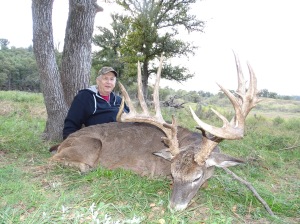
Like most people who hunt deer species in North America, I have a minimal knowledge of the disease known as CWD. Chronic Wasting Disease (CWD) is a fatal (to deer species) neurological disease. A misfolded protein called a prion causes the disease.
It passes from one deer to another through animal to animal contact. The shedding of prions through bodily fluids and/or the decay of infected animals creates a contaminated environment which allows the spread of the disease.
The disease does not pass along to humans or domestic livestock. But it can have a devastating effect on deer herds, especially if they are concentrated in a location such as those yarding up in winter and those in a breeding facility.
Biologists have tried numerous programs to limit the spread of the disease but as yet there is no known cure.
Most programs involve isolating infected areas and the sampling of brain tissue to find infected animals.
Last fall produced the harvest of the best deer of a 60-year hunting career. When told testing for CWD is required, anxiety set in. Visions of some college kid working for the game officials butchering the cape to get at the brain tissue came to the fold. Such was not the case.
Squaw Mountain Ranch where the deer was taken is also a deer breeding facility for sale of deer to ranches across Texas. In order to protect their property and herd, the ranch participates in a number of studies with the wildlife officials of the state. It is no near any of the areas where CWD has been found in the state and the hope to keep it that way.
Any deer that dies on this ranch is checked.
Concerns about damage to the cape are unwarranted. Watching the process turned out to be a good learning experience. Dusty, a guide on the ranch follows normal capeing procedures. However as the cape is rolled toward the head, an incision is made at the joining of the spinal column to the base of the brain.
With some specialized tools he is able to remove a two inch section of the spinal column. He places the sample in a container and sent out for testing. At the lab they section the sample and examine it under a microscope for any folded prions.
After two years of sampling every deer, this ranch has not found a single infected animal.
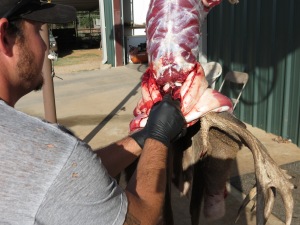
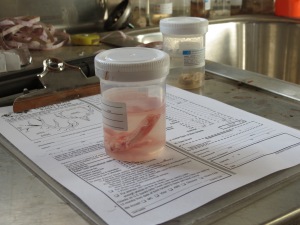

Bad weather in the form of ice and snow has caused cancelation of plans to attend Dallas Safari Club Show for this writer. But something good did come of staying inside for most of the day.
Serendipity resulted in accidentally coming upon an essay by Craig Boddington, world famous hunter and outdoor writer, about his philosophy of life as it relates to his career in hunting and writing about it.
It caused some reflection on this writer’s career in the hunting and fishing field. Although I usually like to keep my personal involvement out of the article, I am making an exception today.
The first commercial success occurred in the 4th grade when the prize for an essay on a local bank’s new signage produced the princely sum of $3. It would be about 15 years before the second sale came along.
That was about 50 years ago. In between I produced a lot of articles that did not sell as well as some freebees for law journals and social work magazines. I even edited an in-house journal for the social service department of a court system.
The real turning point came with a chance meeting at an outdoor show in Chicago. Gene Laulunen had just started MidWest Outdoors. At that time both he and his wife were still teaching school in the suburbs and put the magazine together on their kitchen table in the evening.
He was looking for someone to write about bowhunting. He had a writer on target archery and a friend had told him of me. I wrote a couple of pieces that appeared in the 3rd edition of MidWest Outdoors Magazine. I did not write any more for him for some long forgotten reason.
In the interim I did write some article for other magazines such as Archery World and Bowhunter. In the mid-70’s I became editor of a journal for the Illinois Chapter of Safari Club International and we contracted with MidWest Outdoors to print and distribute it on a monthly basis. Gene then encouraged me to get serious about writing about the outdoors.
Since then I have sold hundreds of article to him and to other publication throughout the upper Midwest.
In 1996 I retired from social work and corrections work. Six months later retirement became boring. I returned to writing, appearing in outdoor shows, a couple of videos and sponsorship of a youth goose hunting contest that occurs annually during National Hunting & Fishing Days.
I will turn 75 in a couple of months. Writing about hunting and fishing has opened a lot of doors. The field is well-known for a lot of freeloading. For that reason I have been reluctant to accept gifts of trips and gear. It just makes me uncomfortable. Most of my trips whether to Africa or around North America are paid for by me. If I do accept some hospitality in any form it is with the understanding that if it turns out to be a good trip, I will write about it. If not then I will not write anything about it. I do not do negative stories or reviews.
I have met, hunted with, fished with some of the greatest people in the outdoor industry. Many are gone now while the rest remain my friends for life.
In recent years health problems have caused me to cut back on some of my activities. It is heck getting old. Sitting here today has cause me to reflect on the past (a great time) and begin to set goals for 2017 that include more travel for hunting and fishing.
Those goals when accomplished will appear in this journal. Stay tuned!

The explosion of the flush, fast darting flight and the fact that they are excellent table fare makes the Gentleman Bobwhite a popular game bird in the southeastern part of the nation including southern Illinois.
Their adaptability to a variety of habitats helps in their development. Modern forestry practices provide habitat for quail not previously found in some areas. Studies show that clear-cut areas provide excellent habitat for as long as five years until the young pine and hardwood seedlings close the overhead canopy shading out quail food plants.
Nationally, the quail is the number one gamebird. This is due to stocking of wild birds and the raising of birds for the preserve shooting market.
Quail live on the seeds of weeds, berries, insects and green vegetation. They prefer vegetation that is neither too dense nor too thin. Well managed habitat produces an abundance of quail for years. The population replenishes itself within one or two years.
Extremes in weather can have some effect on the population. Illinois mild winter and slightly above average rainfall throughout the spring has seemingly aided in the survival of this year’s chick production. Predator control has a limited effect on the populations. Probably more detrimental is the effect of free roaming cats or dogs.
Perhaps one of the better things to happen to the quail population has been the Federal government set aside programs which pay farmers to take marginal land out of crop production, sow them in grasses and leave them un-grazed and un-mown for years. In recent years fewer acres are now in place with the set-aside programs of CRP and CP42 Pollinator Habitat.
Proper fence row management provides cover as can a narrow strip of tall grasses or weeds. Ditches, gullies and other such areas are manageable by letting vegetation grow to produce habitat. It is important to quail populations that mowing be limited or even avoided from May 1 to August 1 each year. It is during this period that the hens are at most risk as they hunker down to protect either their eggs or chicks from the mower. The result is that the hens die and the destruction of the chicks and eggs takes place.
A bird of the edges, quail feed in more open areas but do not stray far from the safety of cover. They would rather walk than fly and avoid anywhere that does not contain food, water and overhead cover.
Water to meet the needs of quail does not have to be standing water. According to studies, quail will thrive on green plants and insects that result from damp soil. Given green plant material and the insects that such growth attracts, quail metabolize enough water to survive and successfully reproduce.
The best place to hunt quail is where the quail are. Hunters have limited options. They have to know someone who has land available for hunting or belong to a club that manages for quail. The minimum acreage is about 500-acres to hold enough birds to last an entire season without additional stocking. With a stocking program, and the release of additional birds for shooting purposes during the season, less land will suffice.

Many deer hunters see deer hunting as going to the same area each year and sitting in a tree. They hope for a deer to walk past and that they shoot straight. Successful deer hunting requires study of the quarry, its biology, and the effect that man has had on both.
White-tailed deer disappeared from Illinois around the turn of the last century. Reintroduced to Southern Illinois in the early 1930’s, reintroduction came in three phases:
The first deer came to southern Illinois and allowed to reproduce. The idea was to get sufficient numbers to allow the program to move to step II.
Step II involved the trapping and translocation of deer to a suitable habitat in other parts of the state. This was so successful that by 1957 some 33 counties opened to deer hunting. By 1975, some 98 counties had deer seasons.
Step III became the over population that has caused depredation of crops and homeowner landscaping. It also involves an increase in auto-deer accidents on area highways. By the 1980’s over population of deer in many areas of the state was becoming a significant problem.
In the 1990’s wildlife officials decided to stress maintenance of deer density that would be capable of sustaining deer hunting. It had to take into account the carrying capacity of the land.
Today there is emphasis in some areas to maintain trophy quality in the deer herd. But, deer hunting is more than just shooting a big deer. Deer hunters seek size and symmetry.
First is the preparation and anticipation of a hunt. Some say it is the most fun part of a deer hunt. Then there is the isolation of sitting in a cold treestand waiting for a deer to come past. Finally, there sometimes is the disappointment of being unsuccessful in getting a deer. To the deer hunter these are all part of the game.
Deer hunting is about leveraging experience and knowledge. All knowledge is cumulative. The more one hunts, the better hunter he becomes. The more he reads about hunting, he becomes a more informed hunter. The more videos about hunting he views, the more discriminating he is in selecting his quarry.
As knowledge accumulates, one sorts out valid theories to test in a specific type of habitat. One tests theories in the field. Then the hunter begins to develop his own theories and test them. That is how one becomes a better hunter. One can always learn if he just keeps an open mind.
This year, study your deer hunting area. Does it present the habitat that will attract and keep deer? If deer are present, why are they there and where do they regularly travel. By knowing why deer do what they do, one improves his chances of being able to be in position for that all important shot.
The huge expanses of public and private land available in southern Illinois attract hunters. The lack of overcrowding makes the area an excellent place to hunt. The Illinois Digest of Hunting and Trapping Regulations contains lists of all the public land hunting areas. It is available free from the Illinois Department of Natural Resources offices though out the state. It is also available anywhere place selling hunting and fishing licenses.

Many deer hunters see deer hunting as going to the same area each year and sitting in a tree. They hope for a deer to walk past and that they shoot straight. Successful deer hunting requires study of the quarry, its biology, and the effect that man has had on both.
White-tailed deer disappeared from Illinois around the turn of the last century. Reintroduced to Southern Illinois in the early 1930’s, reintroduction came in three phases:
The first deer came to southern Illinois and allowed to reproduce. The idea was to get sufficient numbers to allow the program to move to step II.
Step II involved the trapping and translocation of deer to a suitable habitat in other parts of the state. This was so successful that by 1957 some 33 counties opened to deer hunting. By 1975, some 98 counties had deer seasons.
Step III became the over population that has caused depredation of crops and homeowner landscaping. It also involves an increase in auto-deer accidents on area highways. By the 1980’s over population of deer in many areas of the state was becoming a significant problem.
In the 1990’s wildlife officials decided to stress maintenance of deer density that would be capable of sustaining deer hunting. It had to take into account the carrying capacity of the land.
Today there is emphasis in some areas to maintain trophy quality in the deer herd. But, deer hunting is more than just shooting a big deer. Deer hunters seek size and symmetry.
First is the preparation and anticipation of a hunt. Some say it is the most fun part of a deer hunt. Then there is the isolation of sitting in a cold treestand waiting for a deer to come past. Finally, there sometimes is the disappointment of being unsuccessful in getting a deer. To the deer hunter these are all part of the game.
Deer hunting is about leveraging experience and knowledge. All knowledge is cumulative. The more one hunts, the better hunter he becomes. The more he reads about hunting, he becomes a more informed hunter. The more videos about hunting he views, the more discriminating he is in selecting his quarry.
As knowledge accumulates, one sorts out valid theories to test in a specific type of habitat. One tests theories in the field. Then the hunter begins to develop his own theories and test them. That is how one becomes a better hunter. One can always learn if he just keeps an open mind.
This year, study your deer hunting area. Does it present the habitat that will attract and keep deer? If deer are present, why are they there and where do they regularly travel. By knowing why deer do what they do, one improves his chances of being able to be in position for that all important shot.
The huge expanses of public and private land available in southern Illinois attract hunters. The lack of overcrowding makes the area an excellent place to hunt. The Illinois Digest of Hunting and Trapping Regulations contains lists of all the public land hunting areas. It is available free from the Illinois Department of Natural Resources offices though out the state. It is also available anywhere place selling hunting and fishing licenses.
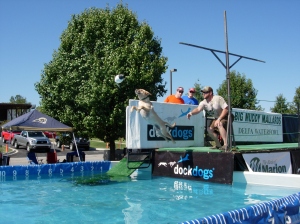
Each year on the fourth Saturday and Sunday in September 25,000 to 40,000 sportsmen and their families travel to the campus of John A. Logan College for The Southern Celebration of National Hunting and Fishing Day. They are attending an event designed to teach hunting and fishing skills as well as the ethics, safety and conservation issues associated with them.
Last year’s attendance set a record of 44,000 people attending this, the largest National Hunting & Fishing Day celebration in the nation.
This year’s event takes place on September 26 and 27, 2015. Admittance and parking is free. Food is available from a variety of venders on the campus at nominal prices.
This year Pappy’s Outdoor is the official title sponsor. Other major sponsors include Williamson County Tourism Bureau, Good Guys Motors, McDonalds, Black Diamond Harley-Davidson and the Friends of Crab Orchard.
Children’s activities include a youth goose calling contest as well as archery, shooting sports and fishing. Local sponsors provide the activities free. Volunteers provide instruction and adult supervision.
Dogs and waterfowl activities figure prominently in the celebration with demonstrations by dock dogs, agility dogs, retrievers, search and rescue dogs, police dogs as well as coon and fox hounds. Instruction on training and nutrition for dogs is also available.
The waterfowl calling series begins with the Don Gasaway Youth Goose Calling Contest on Saturday. A number of duck and goose calling contests attracting youth, professional and amateur callers follow during Saturday and Sunday. They end with the Tim Grounds Southern Illinois World Open Goose Calling Championship on Sunday. A variety of cash and merchandise prizes are available to the contestants.
The High School Bass Fishing Contest involves individual as well as team competition in a fishing contest held on Crab Orchard Lake with the weigh-in held at the Celebration grounds. Area high schools can enter two boats with four anglers and two coaches. The coaches are in the boats but do not fish. The school with the heaviest total weight of bass wins a trophy. There is a penalty for any fish that die. The angler with the largest bass also wins a trophy. Other trophies go to second, third, etc.
Tents erected on the college campus will house some 200 venders. New this year will be an archery tent sponsored by Kevin’s Archery Center, Ava, IL. An adult and a youth shooting range will be inside along with a number of archery manufacturer’s representatives. Instruction will be available along with a chance to get questions answered.
Other activities include wildlife and nature art show, seminars on fishing, game preparation and outdoor cooking as well as a buck skinner’s village with tomahawk throwing area. Displays provide instruction and information about Taxidermy, ATV, RV, boats, deer antler measuring, trapshooting, archery, and a special fishing display.
The Outdoor Art & Heritage Show returns this year inside the college Gymnasium, Skylight Lounge and front lobby. It promotes participation in outdoor recreation through artistic, cultural, natural history, entertainment, and an expanded deer display. Exhibitors include artists, taxidermists, museums, collectors, authors, musicians, not-for-profits, and makers of specialty foods.
Vendors interested in participation should contact Ron Allen as soon as possible. Vendor space is limited and sells out each year. Ron is available at 217-725-7602 (cell), 217-787-8862 (home) or by email at allen92@comcast.net.
Free information regarding motel accommodations and points of interest is available from Williamson County Tourism Bureau, 1602 Sioux Drive, Marion, Illinois 62959 or by calling 1-800-GEESE-99. Information is also available online at VisitSI.com, the Williamson County Tourism Bureau website. The e-mail address is info@VisitSI.com.
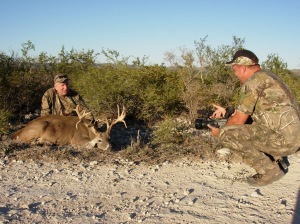
During a recent seminar on video production by Steve Finch it occurs to me that these elements apply to both the production and judging of what makes a good video program for the viewer.
With more and more outdoors men and women making their own videos for family and friends, making them interesting becomes more important.
Basically, to be interesting, the video (or program) needs an effective message and needs to stay on message. It needs scripting out and not just allowed to ramble. The message should be simple and have great music to be entertaining.
The basic elements of a great video are a great story, education, motivation, and stimulate to action.
In making the program, move the camera and use lighting and audio as well as visual techniques. Once back in the office, combine short (3-5 second) raw images with high energy music. There is a lot of free music available on line as well as video editing programs.
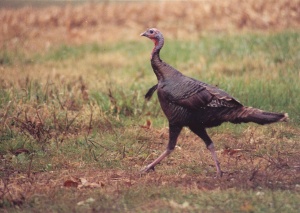
Modern day turkey hunters enjoy some of the best turkey hunting. Some overlook this opportunity because they do not have a place lined up to hunt. Illinois also has some of the country’s best public land turkey hunting. The public land hunting programs have and are used as models by many wildlife management agencies of other states.
The public land hunting opportunities help to meet the demand that cannot be met by private property.
Illinois hunters can receive several permits for the single spring season.
Application forms are available from the IDNR Permit Office in Springfield or on line at the IDNR website: http://www.dnr.state.il.us. Most IDNR regional office also will have them available.
Additional state regulations and site specific rules can be obtained by contacting the public land site and from the Illinois Digest of Hunting and Trapping Regulations. The later is available free from the IDNR online at the above website.
Like most hunting, public land turkey hunting requires one to know the habits and habitat of the birds. It is important to know how turkeys react under hunting pressure and different weather conditions. Weather, the type of cover and having the proper hunting equipment all play a part in finding birds.
Experienced public land hunters learn to concentrate their efforts on areas that do not receive human traffic. Hedge rows offer concealment opportunities for birds that become call shy early in the season. Another such cover situation is any brushy areas next to grain fields.
Weather during turkey season is a real iffy proposition. Passing cold fronts bring with them spring storms. The time just prior to the passing and just after a storm usually means that the birds will be actively feeding. Grain fields, or any other place where spilled grain might be found, are good places to seek out Mr. Turkey. Out of the way roads offer promise of feeding birds.
Scanning the woods is another tool of the turkey hunter on public land. One not only scans the property looking for birds but also for other hunters. In the interest of safety it is wise to know where your fellow hunters are and what they are doing. Any movement in public land hunting should be done slowly and with purpose. The best rule of thumb is to move only when entering or leaving the woods. Never use a turkey call when entering or leaving the hunting area. It is too easy to be mistaken for a turkey moving through the brush.
If you should spot another hunter moving toward you it is recommended that you whistle softly. It will not spook turkeys or the other hunter but will make him aware of your presence. Do not wave lest he mistake you for a bird.
Once in place it is wise to begin calling with soft calls. This is particularly true after the birds have been hunted for some time. The birds have been hearing lots of calls and tend to regard hard calls as danger.
Soft calls attract a gobbler’s attention out of curiosity. The purr calls whether hen or fighting purr calls get older birds to respond in response to their desire to dominate their territory.
Well hunted areas can be totally unproductive on any given day. That does not mean that there are no birds, only that they are not responding to calls. This could be the result of the gobbler being with a hen or are not paying attention to hen sounds because they have become call shy. The next day one may find turkey hunting productive in the very same area.
Even pressured birds are aggressive in the spring. By sitting still and listening for the sounds of the woods, it is possible to hear the disturbance of leaves as gobblers move about in search of hens. In their pursuit of hens, with which to mate, the gobbler will strut and drum giving away his location.
With a little scouting of the area you plan to hunt, and by paying attention to safety while moving about in the woods, one can enjoy a very fruitful experience hunting turkeys on public land.
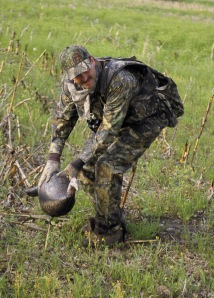
Early life is the most hazardous time for young turkeys. An important sign of turkey population success is whether the young live through the summer. If conditions are right one year, the number of birds making it to the next spring will be greater. By watching brood conditions in your area it is possible to plan for next year.
Continued flooding hurts the turkey nesting along flood plains.
Any decreased gobbling makes finding those birds more difficult. Spring turkey hunting is gobbler hunting. The male birds gobble to attract hens for mating purposes.
As the weeks continue into the latter part of spring, there are fewer female birds to be attracted to the gobblers. Gradually, the season winds down. It is this decline in mating activity that is believed to be the cause of fewer birds being taken later in the season.
Wind and rain can also affect turkey harvest in the spring. Besides being a detriment to hunters taking to the field, wind and rain can sometimes cause the birds to react differently to a call. Turkeys do continue to practice their mating rituals regardless of weather.
Nesting success is dependent upon weather in late May and early June. Below‑average temperatures and very wet weather causes poor nesting success. Good conditions lead to at least two years of excellent hunting. However, it will be two years before those birds are gobbling. Jakes (yearling males) do not gobble the first spring after their birth. They will come to calls but do not gobble. They often surprise a hunter who is unaware just how close they are to him.
It is important that the hunter learn how to hunt turkeys before taking to the field. There are those hunters who take birds year after year, and they are the ones who get out in the field and scout the birds before the season begins.
Successful turkey hunters scout areas to find turkey sign. They look for dusting areas and tracks on back roads. By driving the back roads, one can see tracks of birds traveling across the road and near creeks.
You can spot birds by use of binoculars. By looking for movement then using binoculars, one can identify turkeys. He can determine the number of birds, number of gobblers and number of jakes. That helps to find that specific gobbler with the long beard.
In the early morning and late in the afternoon, birds feed. Birds move to the edges. Edges are areas where two types of cover converge. This can be grasses, pastures, crop fields, brush or woods. Some other areas to inspect are fence rows, roadsides, weedy ditches, abandoned roads and old railroad rights of way.
Most mating activity among turkeys occurs in April. Older gobblers establish territories and each then collects a “harem” of two to six hens. After mating, each hen goes off to begin her nesting.
Nests are usually located in undergrowth that offers some concealment. Most are near the base of a tree or shrub which provides some overhead cover.
If the first nesting attempt is a failure, many hens will re‑nest.
The hen visits the nest once each day for two weeks to lay a single egg. During the latter part of this period she will spend several hours sitting on the eggs each day. What follows is a 28 day incubation process with the hen leaving the nest only once each day. This is generally early in the afternoon, to obtain food and water and sometimes to take a dust bath.
Only about 35 percent of wild turkey nests hatch successfully. Predators sometimes kill the hens while they are on the nest. Agricultural and logging operations kill some of the hens. Some hens are startled by man’s intrusion and will desert the area.
Once the young hatch, the hen remains with the brood near the nest. After several days, she will take them to an open area where insects, grass seeds, blackberries and a wide variety of plant material is available for food. Several hens and poults will join together and will stay together until the next spring.













